
Our Dark Materials
Rare Earth Minerals. U.S. Department of Agriculture, Peggy Greb
Powering the world using sustainable energy will require huge numbers of wind turbines, solar panels, and storage batteries. These will need many new sources of rare earth materials.
Powering the entire world using sustainable energy will require huge numbers of wind turbines, solar panels, and storage batteries. For example 500,000 new wind turbines are needed in California to decarbonize just one-third of its energy supply. And what the green transition needs, not just for wind turbines but for electric cars, storage batteries, and solar panels too, are the so-called rare earth elements, or REEs. These are a group of 15 elements with exotic names like dysprosium and ytterbium. Sometimes two or three other elements are also listed as REEs that are very similar but are not actually in the same chemical family.
REEs are needed not just for sustainable energy – mobile phones, televisions, computers and virtually all modern electronics also use them in very small amounts.
The REEs are heavy and metallic, but for metals they are soft and brittle. The slight differences between them are critical to how they are used. Wind turbines, for instance, use powerful magnets containing the rare earth element neodymium, but these magnets also need the rare earths praseodymium to add strength and dysprosium and terbium to make them resistant to losing their magnetization, which can happen if they get too hot. REEs are needed not just for sustainable energy – mobile phones, televisions, computers and virtually all modern electronics also use them in very small amounts. Mobile phones contain eight different REEs.
Medium Rare
Mining one ton of rare earth elements results in about one ton of low-grade radioactive waste.
Rare earth elements are not rare; there actually are enough of them in the world to meet our future demands. But they are called “rare” because they are mostly scattered about in thin concentrations that are not profitable to mine. The deposits are typically powdery compounds of oxygen which geologists referred to as an “earth” back at the time of their discovery. The fact that they have been somewhat unprofitable to mine means that although enough REEs exist on Earth to meet projected demands, the near-term needs will exceed current supplies. Most estimates predict the demand for REEs will soon grow to four or five times the present market.
The increasing demand will increase prices, and the deposits that are now passed over will then become profitable. Hundreds of new mines will open. But all mining is environmentally damaging, including the mining of REEs. Although different REEs are often found together in the same deposits, they are difficult to separate because they are similar in many ways. The process for doing so requires harsh chemicals like hydrochloric acid and sodium hydroxide and results in toxic wastes that are often poured into open leach ponds. In addition, REE deposits are usually found mixed with low-grade uranium ore. In such cases, mining one ton of rare earth elements results in about one ton of low-grade radioactive waste.
All mining is environmentally damaging, including the mining of REEs.
Concerns about radioactive waste led the government of Greenland to reject development of a new mine in Kvanefjeld, which holds large deposits of REEs. The development proposal from a Chinese company was met with great suspicion. China dominates the REE market. It mines more than half of the world’s production and possesses twice the known reserves of any other nation. Moreover, China manufactures as much as 90% of all components made with REEs, such as neodymium magnets. It supplies, for example, 98% of all REE components used in the European Union. But recent actions by the Chinese government have demonstrated that this is not a reliable situation.
Change Is Coming
Starting in 2010 China slashed its REE exports. At least part of its motivation seems to have involved a diplomatic dispute with Japan. China’s choking off its REE exports is not necessarily nefarious – China has ambitious goals for developing sustainable energy and is the world’s largest electric car manufacturer, so it may well need these resources for its own use. However, China kept prices low for its own manufacturers and charged foreign competitors inflated prices. As a result, China lost a ruling before the World Trade Organization, and it did then reverse its REE policy in 2015. But this market manipulation had the unintended effect for China of loosening its stranglehold.
In 2011 virtually 100% of REE production came from China. Although it takes years to develop new mines, just ten years later the production of rest of the world had already grown to half of China’s, mainly from mines in the US and Australia. The American output comes mostly from a mine in Mountain Pass, California, which had gone bankrupt when China captured the entire market about 20 years ago. Mountain Pass was re-opened with the help of government subsidies in recognition of its strategic importance – the US military has the same needs for REE components as other high-tech electronics consumers and cannot depend on a potential adversary for their supply.
Many other nations see obvious economic benefits in developing previously ignored REE deposits. Vietnam doubled its output in a single year. It possesses ten times the reserves of the United States, and Russia and Brazil have the same levels of reserves as Vietnam. Together with China these four countries have more than 80% of the world’s known deposits of rare earths, but Russia and Brazil today mine practically no REEs. The deposits in Greenland mentioned earlier may yet be developed by a Canadian firm because there is greater confidence that they will manage the mining with minimal environmental damage.
Digging Deeper
Fortunately, as Dr. Ornstein points out, our brains are flexible and able to adjust, if we can recognize and accept the need for them to do so. And the mining of rare earth elements represents an opportunity to help nudge us along that path.
China actually has reasonable environmental regulations, but these are largely ignored in pursuit of profit. The large leach ponds in Baotou have been called the most toxic place on Earth. Although RRE deposits have since been found in Canada, Australia, and other nations with stricter environmental controls, potential reserves are being sought in Africa and other locations where development may be permitted without the added cost of protecting the environment. There is also great interest in exploiting the sea floor for REEs and other valuable resources. But we need to make sure such operations are governed by reasonable and enforceable international agreements; otherwise, ocean mining will once again repeat the Tragedy of the Commons. As Robert Ornstein points out in New World, New Mind, “the overall rate of environmental change has outpaced [our] ability . . . to respond appropriately” without adjusting our thinking to this new world, so different from the ancient one in which our brains evolved. Fortunately, as Dr. Ornstein points out, our brains are flexible and able to adjust, if we can recognize and accept the need for them to do so. And the mining of rare earth elements represents an opportunity to help nudge us along that path.
Currently less than 1% of rare earths are recycled. But we have the potential to reclaim much more of certain types – those found in batteries and magnets, for example. Discarded magnets contain greater concentrations of some REEs than are found in commercial ore deposits. But while great quantities of most REEs exist in consumer electronics in general, the amounts in any single device are tiny, and the processes that reclaim them also liberate toxins otherwise safely locked away in the components. So we will need to develop significant new infrastructure before recycling can become a practical means of securing future REE supplies.
Unfortunately, mining rare earth elements entails great sacrifices from people working at or living near the sites. While some people benefit from working in the mines, many pay with their health, including those who live nearby but aren’t involved in mining operations. On the other hand, we have about 8,000 active coal mines in the world, and their output is not made into wind turbines or electric cars but still results in harmful waste gases added to the atmosphere. And just like mining rare earth elements, mining coal and operating coal-fired power plants produce radioactive waste and toxic waste. In fact, coal mining causes many thousands of deaths, perhaps even millions of deaths every year from respiratory disease. Mining rare earth elements is critical to the green energy transition that is already closing even more harmful coal mines.
These comparisons provide no justification for irresponsible rare earth mining practices, but it is also true that we cannot touch the Earth without changing it. The perfect must not be the enemy of the good.
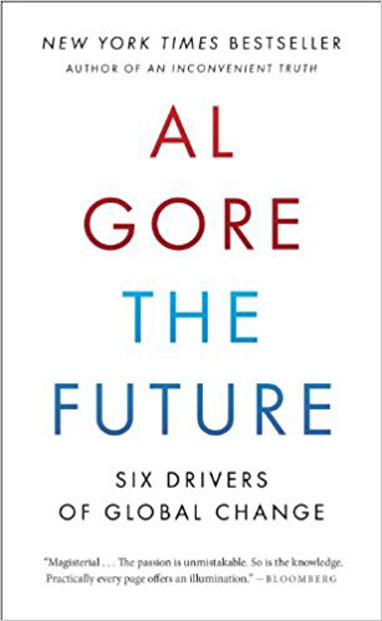
The Future
Six Drivers of Global Change
Al Gore
No period in global history resembles what humanity is about to experience. Explore the key global forces converging to create the complexity of change, our crisis of confidence in facing the options, and how we can take charge of our destiny.
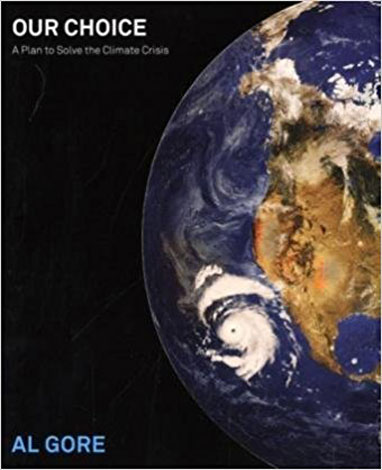
Our Choice
A Plan to Solve the Climate Crisis
Al Gore
We clearly have the tools to solve the climate crisis. The only thing missing is collective will. We must understand the science of climate change and the ways we can better generate and use energy.
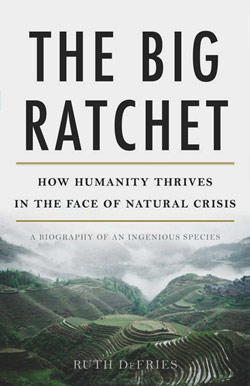
The Big Ratchet
How Humanity Thrives in the Face of Natural Crisis
Ruth DeFries
Human history can be viewed as a repeating spiral of ingenuity—ratchet (technological breakthrough), hatchet (resulting natural disaster), and pivot (inventing new solutions). Whether we can pivot effectively from the last Big Ratchet remains to be seen.
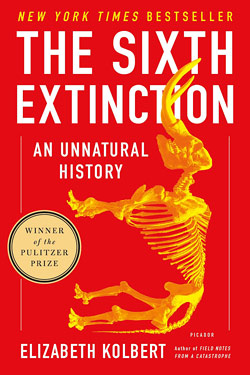
The Sixth Extinction
An Unnatural History
Elizabeth Kolbert
With all of Earth’s five mass extinctions, the climate changed faster than any species could adapt. The current extinction has the same random and rapid properties, but it’s unique in that it’s caused entirely by the actions of a single species—humans.
In the series: Solutions
Related articles:
- Three Basic Facts about the Climate
- Energy, Greenhouse Gases, and Climate Change
- Tipping Points – The Riskiest Bet
- China and Coal and Sunlight
- India: Stepping Back from the Precipice
- The Downside of Being First
- The Human Footprint: The Causes and History of Climate Change
- The Rocky Road to a Sustainable Future
Further Reading
External Stories and Videos
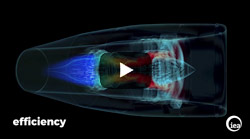
Watch: Digitalization & Energy: A new era in energy?
International Energy Agency
The IEA’s latest report, Digitalization & Energy, is the first-ever comprehensive effort to depict how digital technologies could transform the world’s energy systems.
